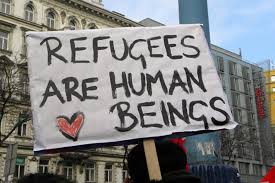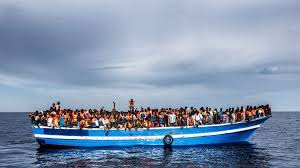Introduction
The practice of
granting asylum to people fleeing persecution in foreign lands is one of the
earliest hallmarks of civilization. The year 2015, in particular, has witnessed
an exponential growth in the number of refugees and migrants, with nearly
400,000 refugees arriving by sea into Greece alone. This staggering nine month
total of just the sea arrivals is nearly 10 times the previous year’s total of
43,500.
Who is a Refugee?
A refugee, in short,
is someone who departs from the country of his nationality to seek protection
elsewhere. The reason for his/her departure may be attributed to social
discrimination, civil war, natural disasters, etc. Though Refugees may be the
prime focus of the UNHCR (United Nations High Commissioner for Refugees), there
are many other categories of people who fall under the direct concern of the
UNHCR.
Migrants are usually
confused with Refugees, and though the means are similar, they are
fundamentally different and are hence treated differently. Migrants move to
change future prospects for their own life. They can still acquire protection
from their own state, but prefer to move, while Refugees transfer because their
nation is incapable of protecting them.
 The third category is
Stateless people. They are unfortunate people who have no nationality. This
situation might arise due to various reasons, most of which have no fault of
the victims, like border changes, ethnic discrimination, etc. Without a
nationality, one cannot acquire ID cards, Passports, bank accounts or admission
into universities. Try imagining yourself in their situation. According to the
UNHCR, more than 10 million people worldwide fall under this category.
The third category is
Stateless people. They are unfortunate people who have no nationality. This
situation might arise due to various reasons, most of which have no fault of
the victims, like border changes, ethnic discrimination, etc. Without a
nationality, one cannot acquire ID cards, Passports, bank accounts or admission
into universities. Try imagining yourself in their situation. According to the
UNHCR, more than 10 million people worldwide fall under this category.
IDPs or Internally
Displaced People, as the name states, are people displaced from their homes but
within their own country. The UNHCR, as of January 2014, accounts for well over
26 million IDPs.
Asylum-Seekers are
also confused with Refugees. In its essence, the term Refugee refers to the
people who have acquired aid from another country, while Asylum-Seekers still
haven’t been able to do so.
‘The Refugee Crisis’ of 2015
Just as Ebola dominated the news channels of 2014, this
year’s crown goes to ‘The Refugee Crisis’, and it deserves that spot. Awareness
should be made so that crisis does not get out of hand. The highest number of
Refugees are from Syria. Both the ISIS killings and the Civil War play an
important role in that. Nearly 5,000 cross the Mediterranean Sea everyday into
Greece. Hungary receives nearly 30,000 new Refugees and migrants every week.
The Mediterranean isn’t the only region face this issue though. Asian countries
like Iraq, Afghanistan and African countries like the Central African Republic
are among the highest Refugee sources in the world.
Challenges Faced by the émigré
In order to escape the atrocities faced in their home town,
Refugees flee the nation, but right into the arms of impending danger. It would
be foolish to think that the hardships faced by the Refugees, end once they
cross the border, which in itself is a daunting task. People wait months on
their side of the border, helplessly and desperately waiting for the adjacent
nation to grant them permission to enter. It takes 3 months to cross the
Mediterranean by boat, and hundreds cram themselves into small fisherman’s
boats to attempt escape via the sea. Over a hundred lives have been lost at sea
this year trying to survive the strong waves, winds and storms of the region. And
acquiring food at sea is a problem on a whole new level altogether. But the
journey is not over once they reach foreign soil. Countless problems await the
Asylum-seekers like acquiring proper shelter, a stable source of income,
cultural and language problems, social stereotyping, etc. All of these problems
pile up on each other, bringing to life a whole new hell for the population of
concern.
UN Help
The UNHCR, established on December 14, 1950, is the United
Nations spearhead for Refugee Aid and Protection and has since become the
backbone of support for Refugees, with their budget crossing US$ 7 Billion in
2015. In 2014, the council started a 10 year plan to eradicate Statelessness. Under
the EU Scheme for Refugees, the UNHCR and its associated European nations have
been assisting the incoming horde of migrating population from Africa and the
Middle East. News like “First Group of Asylum-seekers in Italy relocated to
Sweden” and “200,000 Refugee Children to get free Education in Lebanon” have
become an everyday thing. All of these efforts are facilitated by donations
from willing parties.
Hemanth Chenna
BITSMUN Society






